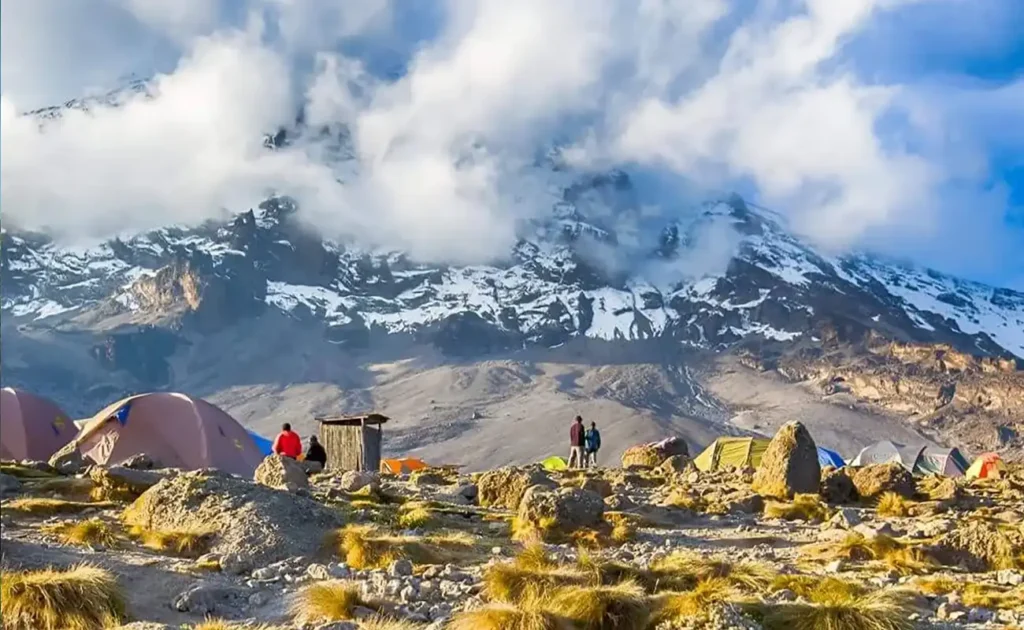Ever wondered why the vibrant allure of a Masai necklace or the deep blue hue of Tanzanite has captivated both collectors and casual shoppers alike? These cultural treasures offer more than aesthetic appeal; they hold stories of heritage and geology, with Tanzanite being a thousand times rarer than diamonds. Such rarity beckons enthusiasts to the heart of Africa, where tradition and treasure coexist.
To purchase these exquisite pieces, understanding their origins is essential. Masai necklaces, crafted by skilled artisans, embody tribal traditions passed down through generations, making them best sourced directly from trusted Maasai vendors. Meanwhile, Tanzanite, discovered only in Tanzania in 1967, requires due diligence, as expertly faceted stones can vary significantly in price and authenticity. Engaging with reputable dealers and being aware of certification standards ensures both authenticity and value in your investment.

How to Identify Authentic Masai Necklaces and Tanzanite
Identifying authentic Masai necklaces often starts with the beads. Traditional Masai beads are vibrant, with a slight texture, reflecting their handmade origin. Another aspect is the design, which typically features symmetrical patterns and bright colors. These designs are crafted by Masai artisans, preserving cultural traditions. If the necklace seems machine-made, it may not be genuine.
Tanzanite, on the other hand, showcases a unique blue-violet color. Authentic Tanzanite should have a deep, rich hue, often described as “velvety”. Tanzanite is only found in Tanzania, adding to its authenticity. A genuine Tanzanite piece will usually come with a certification. This certification ensures that the Tanzanite is real and not a synthetic replica.
When purchasing, it’s crucial to buy from a trusted source. Many authentic sellers provide certification for Tanzanite, which confirms its quality. For Masai necklaces, purchasing directly from Maasai artisans or reputable vendors is best. This not only guarantees authenticity but also supports local communities. Checking reviews and asking questions can further assure you of authenticity.
To sum up, there are helpful signs to look out for. Authentic Masai necklaces have uneven bead shapes, while genuine Tanzanite is vibrant and certified.
- Always verify the source.
- Look for authenticity certificates.
- Pay attention to design details.
Remember, understanding these elements helps make informed purchases. Investing a bit of time in research ensures you get value for your money.
Step #1: Learn the Characteristics of Authentic Materials
Understanding the characteristics of authentic materials is crucial. For Masai necklaces, the beads are often small and handmade. These beads display slight variations in size, making each piece unique. Authentic Masai beads are also usually colorful and reflect traditional patterns. Knowing these details helps ensure you buy genuine items.
Genuine Tanzanite exhibits a rich blue-violet hue, which is a key characteristic. When examining Tanzanite, look for trichroism; this means the gemstone shows three different colors when viewed from different angles. Authentic Tanzanite stones should also have visible inclusions or natural imperfections. These inclusions are a sign that the stone is real and not synthetic. Certification is another way to identify true Tanzanite.
To distinguish real from fake, it’s helpful to use a jeweler’s loupe or magnifying glass. Authentic beads from Masai necklaces will often show signs of handcrafting. In contrast, fake beads might appear too perfect. For Tanzanite, the loupe can help spot those tiny, natural inclusions. Lists like this can be handy:
- Color variation
- Handcrafted appearance
- Natural inclusions
Refer to these points when examining the pieces.
Learning these details can make a big difference in your purchase. Authentic materials have distinct characteristics that replicas cannot mimic. Investing time in understanding these traits ensures that your purchase is worthwhile. It also helps support the traditional artisans who create these unique pieces. Educate yourself before buying to gain the best value.
Step #2: Find Reputable Vendors and Artisans
Finding reputable vendors and artisans is key when buying Masai necklaces and Tanzanite. Start by researching vendors online and reading reviews from previous customers. A vendor with positive feedback is likely trustworthy. Look for details about their sourcing practices and how they support artisans. This provides insight into their reliability and ethics.
Local artisan markets are also great places to find authentic pieces. By visiting these markets, you can directly meet and purchase from the makers. This not only ensures authenticity but also supports the local economy. Artisans often share stories behind their work, adding value to your purchase. Personal connections like these enhance the buying experience.
Online platforms can also be valuable resources. Websites that specialize in artisan crafts often feature detailed information about their vendors.
- Artist backgrounds
- Material sourcing
- Customer reviews
These platforms aim to offer transparency and connect buyers with genuine products. They can help eliminate the guesswork involved in finding reputable sources.
For added assurance, seek vendors who offer authenticity certificates, especially for Tanzanite. Genuine sellers usually provide documentation, confirming the stone’s quality. This piece of paper can make a big difference in verifying your purchase. When combined with vendor research, it ensures you’re buying the real deal. Secure transactions lead to confident and rewarding purchases.
Step #3: Verify the Origin and Certification
Verifying the origin and certification of Masai necklaces and Tanzanite is a crucial step in the purchasing process. Start by asking for certificates of authenticity from the seller. These certificates should include detailed information about the material’s source. For Tanzanite, the certificate should also indicate the gem’s grade. Authentic documents build trust and confirm the quality of your purchase.
The origin of Masai necklaces is tied deeply to the Maasai culture. Authentic Masai necklaces are usually handcrafted by Maasai women. Learning about the maker can provide assurance of authenticity. Many sellers also offer information about the artisans involved. This helps in verifying the genuine origin of the piece.
Tanzanite is exclusively found in Tanzania, making it rare and valuable. Checking the certification that confirms this origin is key. Reputable vendors will always provide this documentation. Moreover, such paperwork often includes details about the mining and cutting process. This information helps you understand the entire journey of the gemstone.
When examining certifications, look for specific details. Authentic certificates should provide:
- Name of the maker or supplier
- Details on material origin
- Quality grading (for gems like Tanzanite)
These details ensure that the certificate is legitimate and reflects the true origins of the item. Clear and comprehensive documentation makes it easier to identify genuine products.
Another useful tip is to verify the credentials of the certifying agency. Trusted agencies follow strict guidelines and standards for certification. Their reputation adds credibility to the documents they issue. Don’t hesitate to do a quick online search about the certifying body. Knowing that a reputable agency has endorsed your purchase brings peace of mind.
This verification process might seem tedious, but it is worth the effort. Proper documentation and verification protect you from fraud. They ensure you get what you pay for and support ethical practices. Taking these steps helps in making informed and secure purchases. Enjoy the confidence that comes from knowing your Masai necklace or Tanzanite is genuinely authentic.
Tips for Negotiating Prices When Buying Masai Necklaces and Tanzanite
Negotiating prices can be an art, especially when purchasing unique items like Masai necklaces and Tanzanite. Do your research ahead of time to understand the typical price range. This knowledge gives you a solid foundation for your negotiations. It’s important to know what a fair price is, so you don’t overpay. Research helps in identifying reasonable offers.
Building a relationship with the vendor can also be beneficial. Start by chatting and showing interest in their craft. Genuine conversation often leads to better deals. Vendors appreciate buyers who show respect and curiosity about their work. This mutual respect can make negotiations smoother.
Don’t be afraid to make a reasonable counteroffer. When the vendor states a price, it’s alright to suggest a modestly lower price. If you have done your research, you’ll know what is fair. Sometimes, the vendor might agree, or they might propose another price. This back-and-forth is part of the negotiating process.
Consider purchasing multiple items for a better deal. Vendors might offer discounts for bulk purchases. You can ask if they have a package deal.
- Buy more than one necklace
- Combine a necklace with Tanzanite
- Ask for a bundle discount
These strategies can lead to significant savings.
A final tip is to be patient and respectful. If the vendor is tough on price, don’t rush or show frustration. Keep your tone friendly and open. Respect goes a long way during negotiations. A calm approach often encourages the vendor to be more flexible.
How to Care for and Maintain Masai Necklaces and Tanzanite Jewelry
Taking care of your Masai necklaces and Tanzanite jewelry ensures they last for a long time. For Masai necklaces, it’s important to keep them dry as water can weaken the threads. Storing them in a dry place is crucial. Hang them or lay them flat to prevent tangling. This helps maintain their shape and color.
Tanzanite jewelry requires special care because it’s a softer stone. Avoid wearing Tanzanite while doing heavy work or sports to prevent scratches. Clean Tanzanite gently with a soft cloth and mild soap. Rinse with lukewarm water, and dry carefully to avoid any water spots. This simple routine helps preserve the gem’s stunning color.
Both Masai necklaces and Tanzanite benefit from proper storage. Use a jewelry box with compartments to keep items separate. This prevents them from clashing and getting damaged.
- Store in a cool, dry place
- Avoid placing them in direct sunlight
- Use soft pouches for extra protection
These steps keep your jewelry safe and looking new.
Regular inspection of your items is also beneficial. Check clasps, threads, and settings every few months. If you notice any damage or wear, it’s best to repair them quickly. Professional jewelers can help fix any issues with Tanzanite settings. Quick action stops small problems from turning into big ones.
To add, you might want to consider occasional professional cleaning. Jewelers have the tools to clean and polish jewelry like new. They can handle delicate items with care. This also provides an opportunity for them to check for any hidden damage. Regular professional check-ups add to the value and longevity of your treasured items.
Key Takeaways
- Keep Masai necklaces dry to maintain their quality and beauty.
- Tanzanite needs gentle cleaning due to its softness.
- Separate storage compartments prevent jewelry from tangling or scratching.
- Regularly check for damage on clasps, threads, and settings.
- Consider professional cleaning for long-lasting sparkle and maintenance.
Conclusion
Investing in Masai necklaces and Tanzanite jewelry involves appreciating their cultural and geological significance. Understanding the authenticity and craftsmanship behind these pieces enhances their value. By following guidelines on identification and care, collectors can ensure these treasures remain intact for generations.
Navigating the purchase process requires a thoughtful approach, from verifying sources to negotiation tactics. With their unique charm, Masai and Tanzanite pieces offer both aesthetic and historical value. Experts who prioritize authenticity and proper care will not only preserve beauty but also support ethical sourcing and artisanship.



